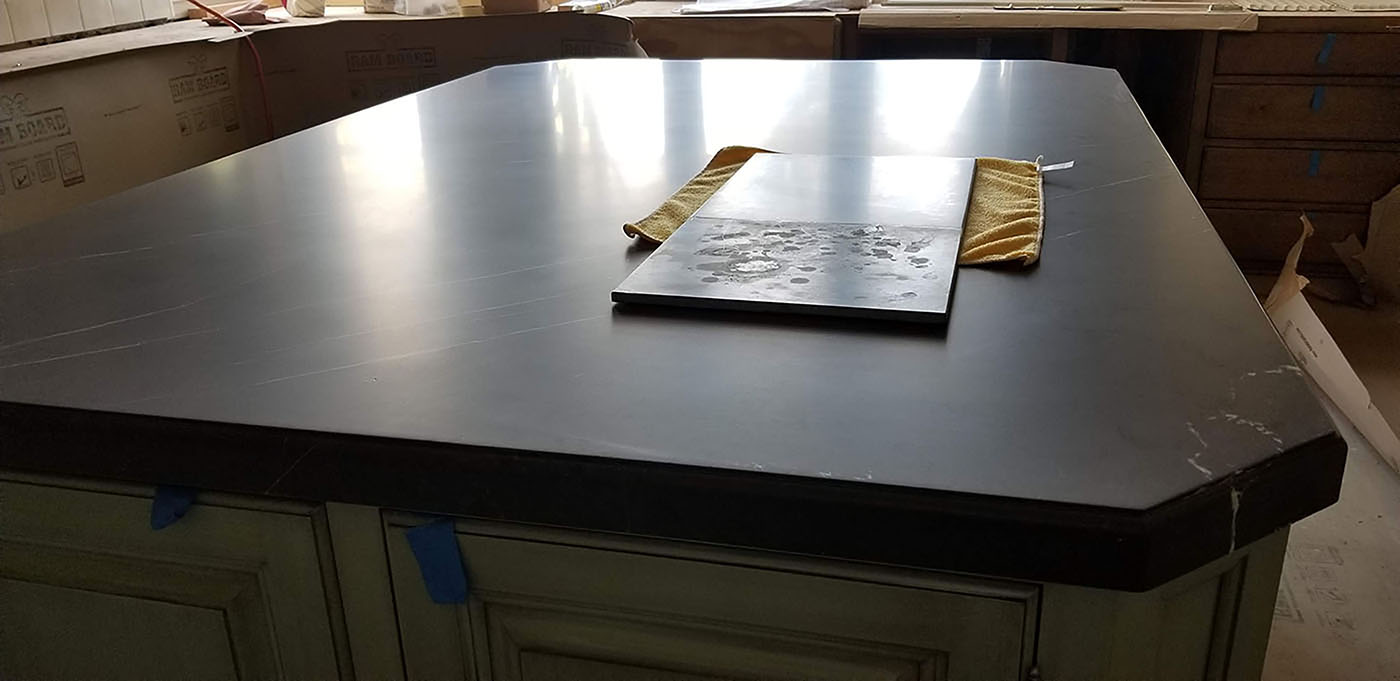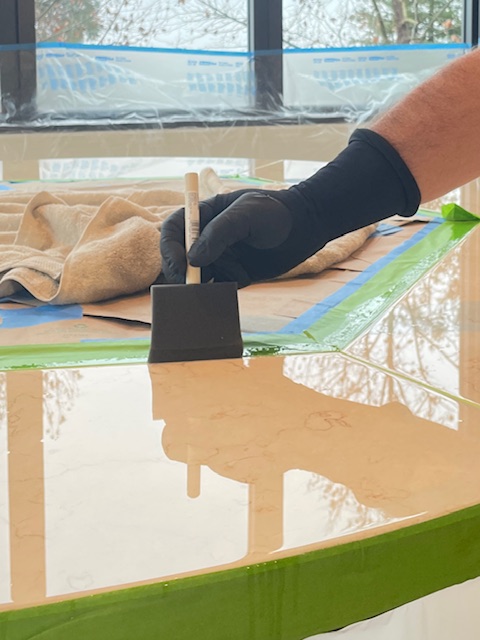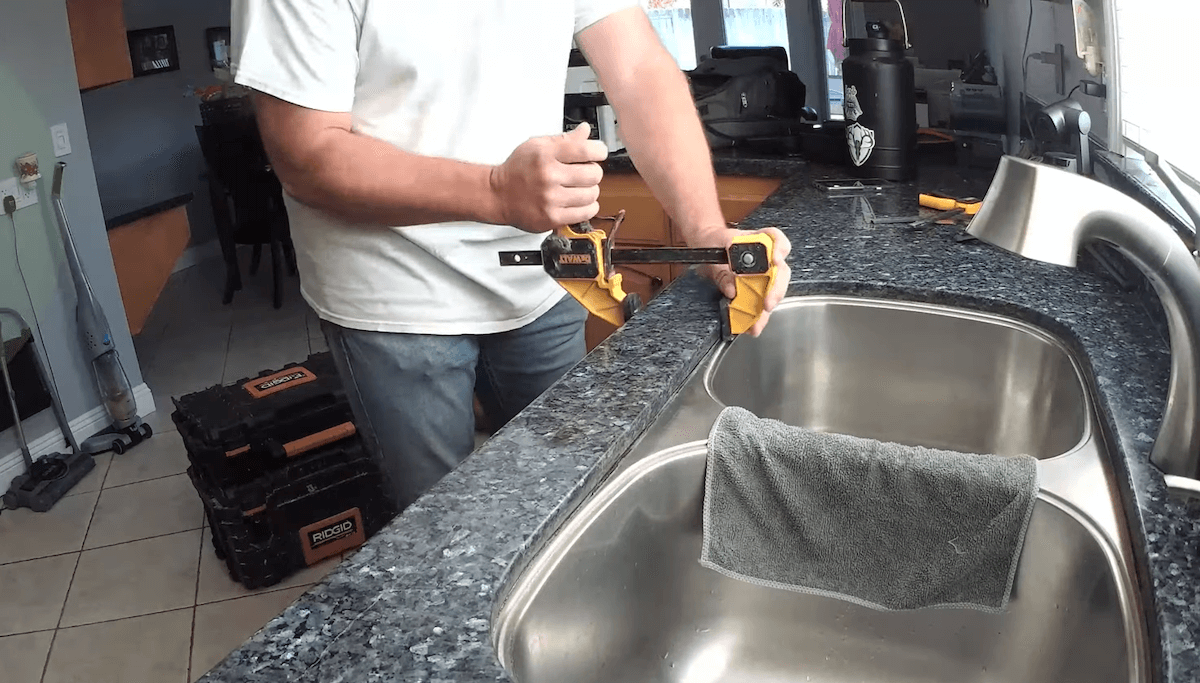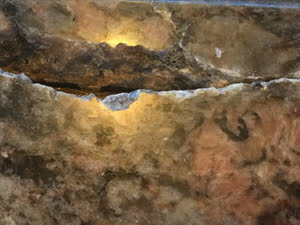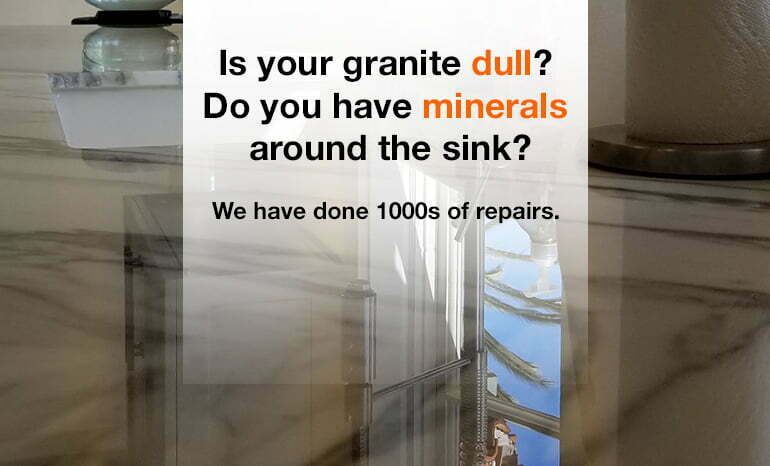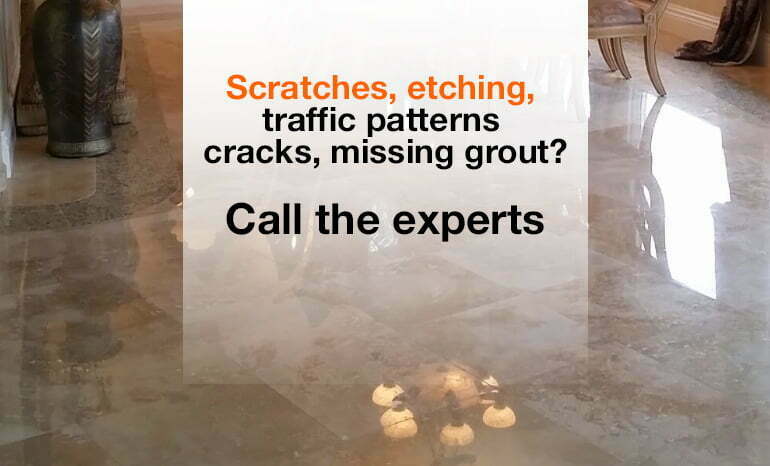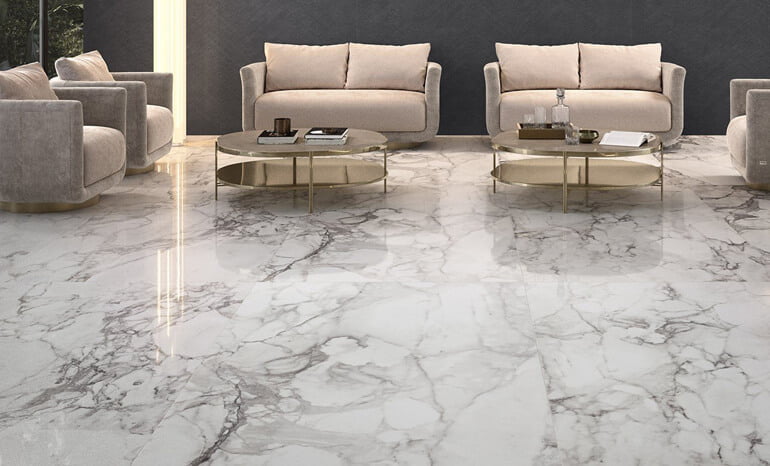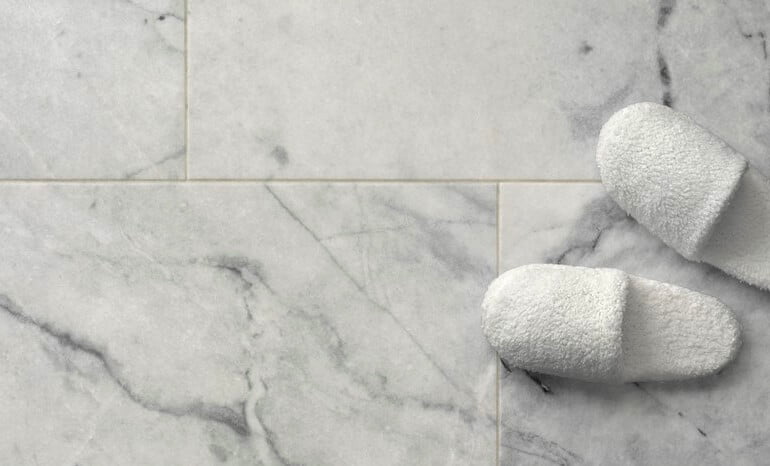Travertine is one of the most common flooring materials in many parts of the United States. We get calls every day from customers that have problems with scratches, etches, holes,and other issues. Our specialty is restoring your stone to its original “like new” condition. But what happens when we leave is just as important. If you do not have the information necessary to get the most from our services, we have not provided enough value. This care guide is designed to lengthen the useful life of your floors and increase the time between professional service. We want you to come back to us, but not too soon.
When caring for your travertine floors it is important to remember a few simple rules:
- Water is the enemy of travertine, especially polished travertine. Water carries dust and other particulates into the stone and dries. This causes the dark soiling to accumulate in the small holes and grout. When this happens, professional cleaning is needed to restore your floor.
- Holes are common in travertine floors and require constant attention. You can fill these holes using the appropriate filler of your choice. Please the Filling holes section below.
- Dry dust mops, vacuums, and brooms will save you thousands of dollars over the life of your floor. When mopping is necessary, make sure the surface is thoroughly dried with a towel before the solution dries on the surface. When mop water is allowed to dry on the surface, dirt and soiling is pulled, by gravity into the tiny holes and grout and builds up over time causing the need for expensive services.
- Use felt pads under all furniture to prevent scratching and protect the floor from wheeled chairs to prevent compacting holes.
Tools to have on hand (Always have a squeegee on hand for daily squeegeeing):
- Neutral Stone Cleaner
- Vacuum with soft bristle wand
- Several Large Towels
- Microfiber Dust Mop
- Traverfill or Tenax Travertine Filler and Related Tools
Evaluate Surfaces to begin maintenance:
- Check all grout areas especially in areas around doorways and in walkways. The baseboards should be caulked to prevent moisture from going under them and causing damage over time. Patch any missing grout prior to starting your maintenance.
- Look closely at the surface for water absorption. If the surface absorbs water, it should be sealed prior to beginning your maintenance. Allow sealed areas to stay dry cure for a minimum of 2 days.
- Check the surface for cracks and loose tiles. Cracks are usually a subsurface cause. If you floor is set over a slab, cracks can be transfer from a crack in the slab. Many customers choose to fill these cracks as opposed to repairing the main problem. Understand that these types of cracks will need to be repaired occasionally as movement occurs.
Filling Holes:
- Traverfill -Clean the holes out with a nylon toothbrush or rag and a solvent or cleaner. Mix Traverfill as directed by the manufacturer to a peanut butter consistency. Using a plastic putty knife or a margin float apply the Traverfilll to the surface. Jam it into the hole and scrape off a few times to make sure the hole is completely full. On the last scrape leave the Traverfill slightly above the surface. Allow to dry and scrape with a blade. This should bring the filler to flush. Remove residues with a damp sponge.
- Tenax Travertine Filler – Clean the holes out with a nylon toothbrush or rag and a solvent or cleaner. Scoop a small amount ofTenax Travertine Filler onto a piece of cardboard with a putty knife. Mix the filler on the cardboard to loosen it. Squirt a small amount of hardener on an out of the way surface. Separate a small amount of filler and mix with a small amount of hardener (50:1). Take a new razor blade and apply the filler into the hole a few different directions making sure to completely fill the hole. Scrape the surface to as flush as possible. Allow to harden for 20 minutes. Wipe the surface with acetone and a rag.
Daily, Weekly, Biweekly Maintenance:
- Dust Mop the surface daily to remove residues from dust as well as pet hair and dander. If you have no pets, your Dust Mopping can be less frequent.
- Textured Surfaces must be vacuumed regularly to remove debris from the grout lines and lower parts of the stone that a dust mop may not reach. There are a few automatic vacuums on the market that have many customers have had good success with.
- Spot clean areas that get frequent use with the appropriate Neutral Stone Cleaner and remove residues completely with a towel.
- When mopping is necessary using a correctly diluted Neutral Stone Cleaner; apply enough cleaning solution to the floor so that it does not dry before you have an opportunity to dry it. Use a large towel under the velcro frame of your Microfiber Dust Mop head to dry the floor thoroughly. You want to see the soiling on the towel.
Biyearly or Every Six Months:
- Check your floor for holes and scratches and address the causes if necessary. Fix felt pads and prevent wheeled chairs from damaging the surface.
- Check your sealer periodically to insure you have adequate protection. Many travertines are very dense but some can be absorbent so keep an eye on this.
- When major spills, scratches, and other damage occurs; don’t be afraid to call a professional. Professional stone refinishers exist to help you get the most out of your investment long term by keeping your floors looking like new.
About Ted McFadden: Ted is the owner of Sureshine Care and Restoration Services, Inc. in Orange County California with an office in Morgan Hill, California. Ted has been polishing and restoring natural stone and tile since 1987, has written a book on the subject and teaches a four day intensive hands on seminar to teach interested students the stone restoration trade. If you are in need of services in Southern California, please call us at (800)378-0266 or emailinfo@sureshinecares.com. You can purchase all of the products listed in this article ateasystonecare.com.
